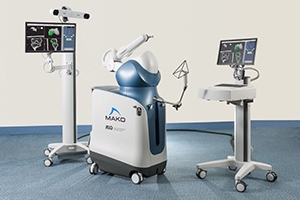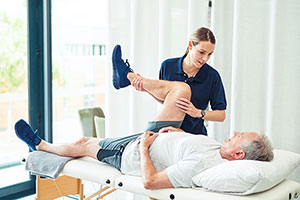A gluteus maximus injury describes any injury to the buttocks. The gluteus maximus is one of the three major muscles that make up the gluteal region (the other two being the gluteus medius and gluteus minimus), a muscle group that helps move the hips and the thigh muscles. It also supports the back and helps keep the torso upright. Injuring your gluteus maximus could affect your ability to sit, stand, bend, and walk without pain or difficulty.
In this article, we will delve into the signs and symptoms of a gluteus maximus injury, their common causes, and treatment.
Gluteus Maximus Injury Symptoms
Of the three gluteal muscles, the gluteus maximus (GM) is the largest muscle that gives the shape of the buttocks and hips. Since it works in tandem with other muscle groups in the lower limbs and back, it’s often tricky to diagnose an injury specific to this muscle. However, any injury to the GM typically displays the following gluteus maximus injury symptoms:
- Pain and stiffness in the buttock area
- Discomfort while sitting, standing, and bending
- Visible swelling or bruising
- Tenderness
- A general feeling of weakness
The degree of pain and discomfort depends on the severity of the injury. A strain, for example, is manageable, and patients can still move, albeit more carefully and slowly. On the other hand, a gluteal tear is extremely painful and debilitating. It will likely affect the gluteus medius, too, so you can expect physicians to recommend treatments for gluteus medius tear.
However, these symptoms can also emerge from issues with the hip rotator muscles. In addition, ischial bursitis also induces similar symptoms. Ischial bursa is a condition wherein the fluid-filled sac between the V-shaped bone of the pelvis and the tendon attached to the hamstring muscles become inflamed because of prolonged sitting on a hard surface or repetitive motions, like cycling, running, and kicking.
How do you determine that you are experiencing gluteus maximus injury symptoms? The best way is to recall your activities and identify incidents that could have caused direct injury to your glutes.
Common Causes of Gluteus Maximus Injuries
- Trauma - Slips and falls are the most common causes of GM injuries. This means people with mobility issues and the elderly are at high risk. Direct, forceful blows to the muscle will also cause physical trauma and contusions (bruising).
- Muscle overuse and misuse - Strenuous physical activity like playing contact sports and testing one’s limits with extreme outdoor adventures can excessively stretch the GM. In some cases, the gluteal muscles are pulled far beyond their normal ranges of motion that the muscle or the attached tendons tear.
- Weakened gluteus maximus - A sedentary lifestyle can cause the GM to weaken and lead to other types of injuries. Inactivity and sitting still for long periods (i.e., studying or working all day at a desk) can also lead to gluteal dysfunction. Weak gluteus maximus symptoms include chronic pain in the hips and knees, poor posture and mobility, an abnormal gait, and blisters on the feet.
If you can trace your buttock pain to a recent physical activity or incident that could have bruised your muscles, you may have a GM injury. However, it is always best to consult a physician and get an accurate diagnosis to be safe. Thereafter, your medical professional can prescribe painkillers if necessary and recommend the appropriate treatment for your injury.
Treatment for Gluteus Maximus Injuries
When there’s no need for surgery or intensive rehabilitation, injuries in the gluteal region can be treated the same way. Treatments for gluteus medius tear can be applied to gluteus maximus strain and vice versa.
Immediate treatment is needed to reduce the inflammation of the muscle and, by extension, the pain and discomfort of the patient. Icing the buttocks and elevating the hip by placing a soft pillow below the buttocks can help. If lying on the back and placing weight on the buttocks is too painful, a pregnancy pillow, neck pillow, or donut-shaped pool inflatable can help. Rest is also crucial as the patient needs to minimize their movements to allow the muscle to heal faster.
In some circumstances, physicians may prescribe steroid injections directly to the muscle to reduce the inflammation as quickly as possible. This procedure should be entrusted to medical personnel as it is administered with a long needle and an ultrasound.
A patient may need physical therapy if the injury is due to overuse, such as after a sporting event. An abnormal gait can also be a cause and a symptom, and people who suffer gluteal injury because of it also need therapy to address the damage to their GM and correct their gait.
Strength training is another treatment method that addresses weak gluteus maximus symptoms. Appropriate and regular exercises that strengthen the GM help prevent future injuries by maintaining or even improving the muscle’s range of motion.
Receive Treatment for Gluteus Maximus Injury at The American Hip Institute
People with a minor gluteal injury can heal with rest and proper care at home. However, those who need physical therapy and surgery need a specialist’s care and supervision. It won’t be enough to know the signs and symptoms of gluteus maximus injury and the treatment you can do at home. The recovery period can take weeks, so it’s best to receive guidance and advice from an attending physician who can monitor the progress of the treatment.
If you or someone you know needs expert care after a gluteus maximus injury diagnosis. In that case, our experienced medical professionals at American Hip Institute can conduct assessments and provide personalized treatment plans. We perform hip replacement procedures, nonsurgical procedures, and more.




